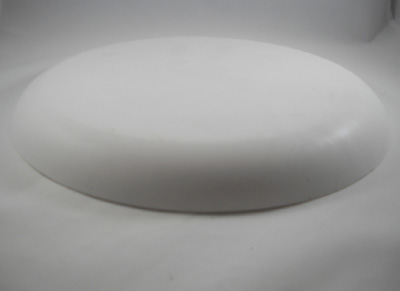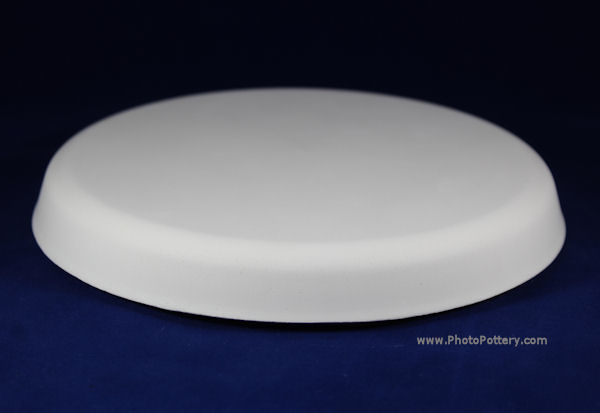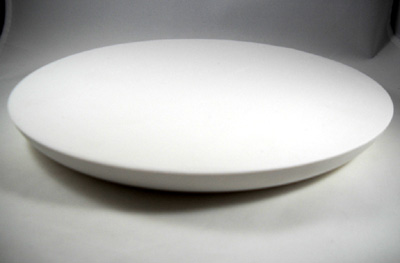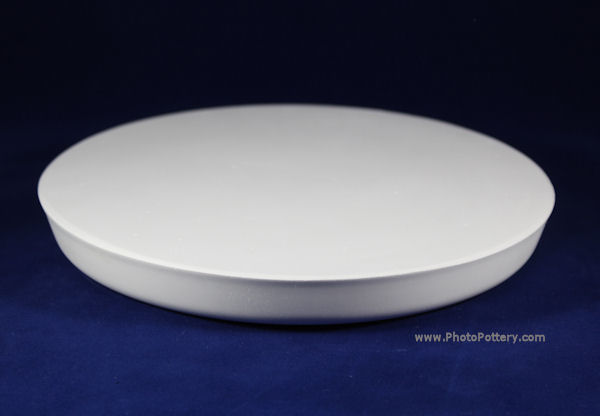Compare Plaster Pottery Molds
Plate Mold (Dinner/Salad) Compared To Medium Plate Drape Mold
Quick Links below to compare by shape.
Plaster Pottery Mold Comparison ChartDimensions in inches. See notes below |
||
| Click link to visit mold's page |
Plate Mold (Dinner/Salad) |
Medium Plate Drape Mold |
| Mold Price (USD): | $19.00 | $11.00 |
| Inverted Upright below Bigger |

|

|
| Shape | Round | Round |
| For round shapes, width = length: both represent diameter. | ||
| Mold Top Height |
0.75"
|
0.75"
|
| Mold Top Width |
9.75"
(Diameter)
2.75" wider |
7"
(Diameter)
|
| Mold Top Length |
9.75"
(Diameter)
2.75" longer |
7"
(Diameter)
|
| Mold Volume |
36 Ounces
58% more |
15 Ounces
|
| Mold Bottom Width |
8"
(Diameter)
1.75" wider |
6.25"
(Diameter)
|
| Mold Bottom Length |
8"
(Diameter)
1.75" longer |
6.25"
(Diameter)
|
|
Upright (pottery shape) Inverted above Bigger |

|

|
Calculated Pottery Size After 10% ShrinkageChange Shrinkage, Notes |
||
| Pottery Height | 0.68" | 0.68" |
| Pottery Width | 8.78" (Diameter) | 6.3" (Diameter) |
| Pottery Length | 8.78" (Diameter) | 6.3" (Diameter) |
| Pottery Volume | 32 Ounces | 14 Ounces |
| Pottery Bottom Width | 7.2" (Diameter) | 5.63" (Diameter) |
| Pottery Bottom Length | 7.2" (Diameter) | 5.63" (Diameter) |
| Plate Mold (Dinner/Salad) | Medium Plate Drape Mold | |
|
Copyright © 2025 bInfinity Web Inc. |
||
Related: Compare Pottery Molds By Shape
Copyright © 2025 bInfinity Web Inc.
Notes on Comparing Molds, Shrink Rate
Volume and dimensions are based on the plaster mold, and are approximate. All molds are hand-made, and consequently may vary ever so slightly. Since clay is draped on these molds, the volume and size is similar to the inside walls of a pottery piece* immediately after being removed from the mold, before any shrinkage occurs.
*Note: Measurements are not from the outer wall, since clay thickness can vary, directly impacting width and length.
Measuring Pottery Mold Volume
The volume indicated for each mold is approximate. Ultimately, the pottery piece you make with a given mold, along with the shrink rate of the clay you use, will determine the capacity of the finished ware. For instance, if you do not utilize the full height of the mold, volume will be less than indicated.
Measuring Plaster Molds - From the Top
As with mold's volume, the dimensions are of the plaster mold itself, and not of any specific piece of pottery made on it. While most molds are simple to measure, some are more challenging, such as the heart mold, where we chose width to be the widest part (left to right) and height from the bottom of the top's "v" to the bottom's.
Included with the top's dimensions is also the height of the mold, measured when upright, from tabletop to mold's top.
Measuring Plaster Molds - From the Bottom
Many molds taper from top to bottom. The bottom of the mold forms the bottom of your ceramic piece; for example, for a bowl, the bottom rests against the tabletop. Plaster hump molds are typically worked on inverted (i.e. upside down): clay is draped over the bottom part of the mold. Measuring the bottom of some types of molds is generally less precise than the top, since it can be a subjective call as to where the bottom stops and the curvature upward starts.
How Much Will Pottery Made on Molds Shrink?
Shrinkage of pottery made on plaster drape molds is similar to other hand-building techniques or wheel throwing - it is dependent on the clay body and its formulation.
If you plan to use multiple types of clay - such as stoneware and porcelain - you can calculate with each clay's shrink rate to get a good idea of how large the final size and capacity of the pottery you will make. By default, 10 percent shrinkage is used. To change, fill in the field Clay Shrink Rate on the the form and click/tap Compare.
Why Volume for Bowls, Serveware?
Typically we think in terms of volume for pottery that will hold liquid, like ceramic mugs and pitchers. Other shapes, like plates and large bowls, are mainly used for solids. When comparing, a metric such as volume in ounces provides a simple common measurement by which to gauge size difference.
Can You Let Pottery Dry on a Hump Mold?
Short answer: Completely dry - no, as cracking is likely. Dry overnight - maybe, if wrapped well under plastic and one slab used, without joins.
As clay dries, water evaporates and the clay particles coalesce. If left to dry on a hump mold (plaster, or other material), the shape blocks inward contraction, more than likely resulting in cracking, which may not manifest until after bisque firing.
If the piece is joined (e.g. multiple slabs), the probability that the joins will break apart if left to dry on the mold is higher.
If the piece is formed from one rolled out slab of clay, you may have some success leaving it on the mold overnight if covered extremely well with plastic. But even a single piece of draped clay should not be left to fully dry on a hump mold.
It's always best to remove the pottery from a plaster hump mold as soon as it has firmed up sufficiently to support the draped shape.
Are the Plaster Mold Photos to Scale?
The photos are not to scale and consequently a larger mold may appear smaller than a mold that is smaller.
For this reason, review the mold's volume and dimensions, where it is noted which mold has the larger metric.
Select pottery molds to compare
H = height, diam = diameter, W = width, L = length. Measurements are in inches
Copyright © 2025 bInfinity Web Inc.
Compare Molds By Shape
These groupings are designed to facilitate review, but you can certainly use these shapes to make many types of pottery. For example, make vases with the large cup, or a jewelry ring holder with our smallest bowl. To compare any two molds, regardless of shape, use the above form.

